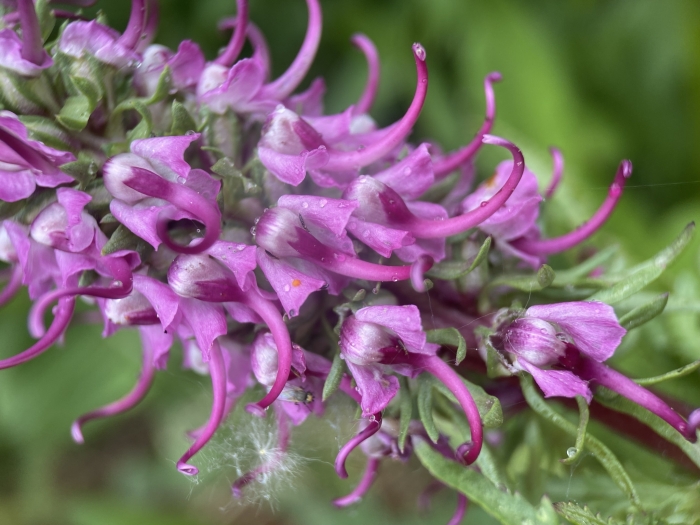Elephanthead Lousewort
(Pedicularis groenlandica)
Elephanthead Lousewort (Pedicularis groenlandica)
/
/

Matt Berger
CC BY 4.0

















































Estimated Native Range
Summary
Elephanthead Lousewort thrives in consistently moist conditions and is often found in wetlands or near water sources. It is valued for its unique flower shape and vibrant color, adding interest to water gardens, bog gardens, and naturalized areas. It requires full sun to part shade and prefers soils with medium drainage. While it is a root parasite, it is not aggressive and coexists well with many other moisture-loving plants. Gardeners should be aware that it may require additional watering during dry periods to maintain its preferred habitat conditions.CC BY-SA 4.0
Plant Description
- Plant Type: Herb
- Height: 0.6-1.3 feet
- Width: 1-2.6 feet
- Growth Rate: Moderate
- Flower Color: Purple, Pink
- Flowering Season: Spring
- Leaf Retention: Deciduous
Growth Requirements
- Sun: Full Sun, Part Shade
- Water: High
- Drainage: Medium
Common Uses
Bee Garden, Bird Garden, Butterfly Garden, Hummingbird Garden, Low Maintenance, Showy Flowers
Natural Habitat
Moist meadows, streambanks, and alpine areas in Western North America
Other Names
Common Names: Greenland Lousewort, Butterfly Tongue, Bull Elephant’s-Head, Elephant’s-Head, Elephant’s-Head Lousewort, Little Red Elephants, Long-Beaked Pedicularis, Pink Elephants, Pédiculaire Du Groenland, Elephant’s Head
Scientific Names: , Pedicularis groenlandica, Pedicularis groenlandica var. surrecta, Pedicularis groenlandica subsp. surrecta, Elephantella groenlandica, Pedicularis surrecta, Pedicularis groenlandica f. pallida, Pedicularis groenlandica subsp. groenlandica, Elephantella groendlandica, Elephantella groenlandica var. surrecta
GBIF Accepted Name: Pedicularis groenlandica Retz.